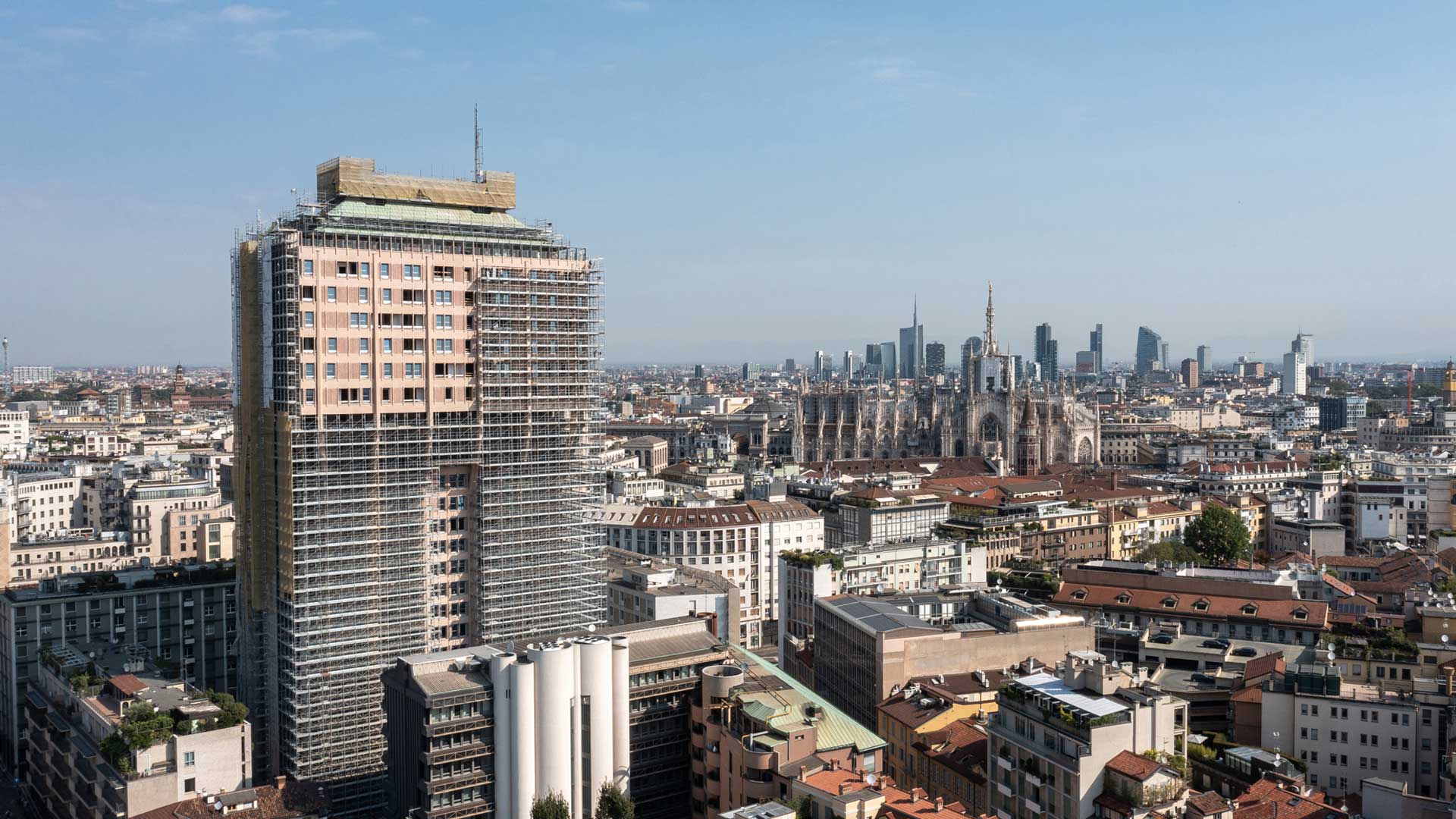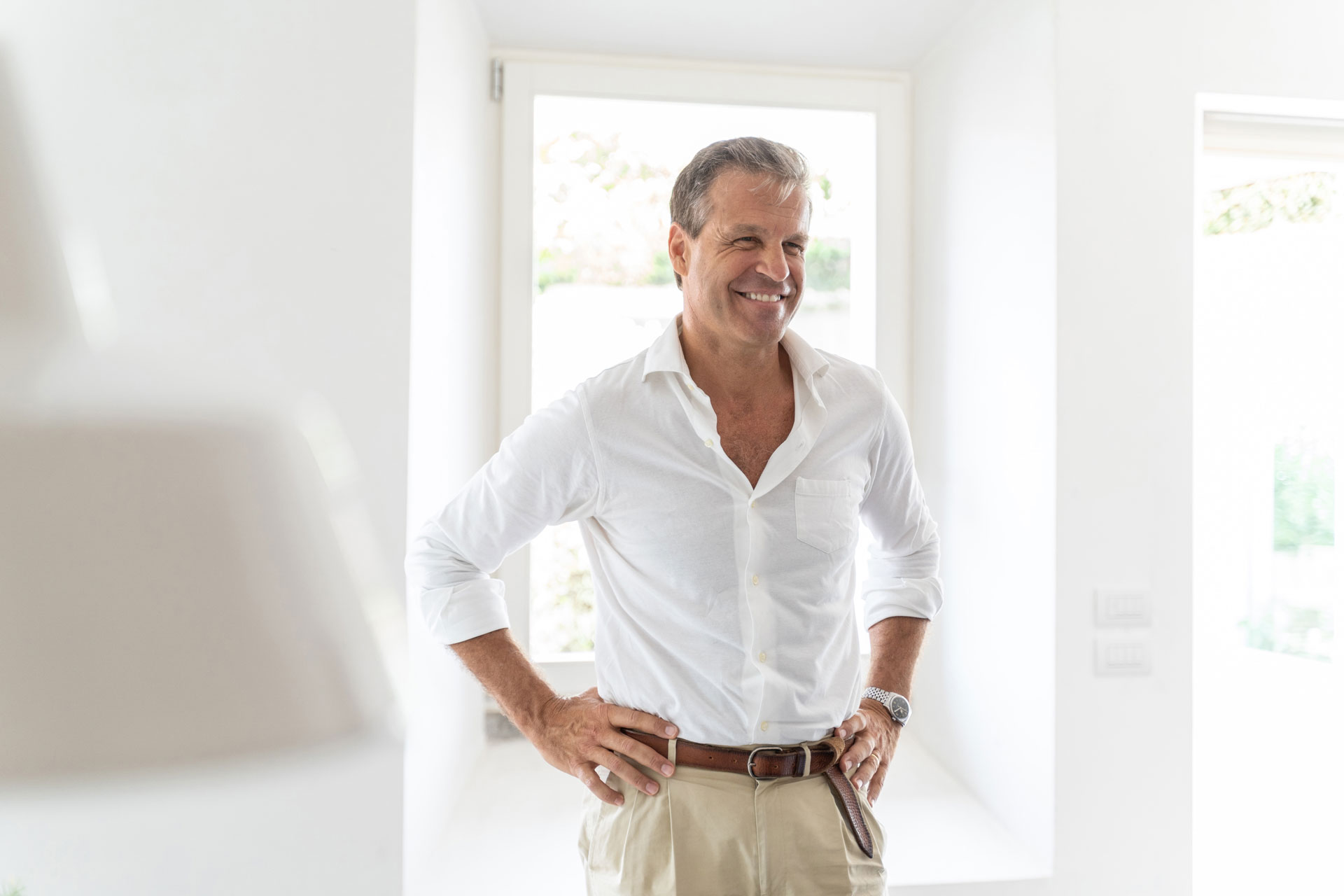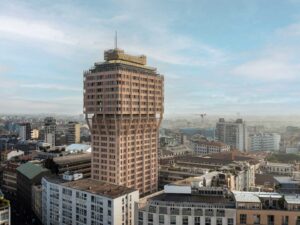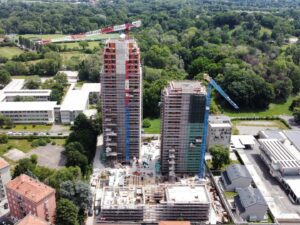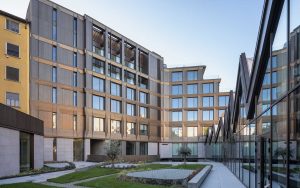Velasca Tower
After over two years of planning by the ASTI ARCHITETTI studio - in constant touch with Hines and the Soprintendenza Archeologica, Belle Arti e Paesaggio (Superintendecy of Archaeology, Fine Arts and Landscape) - and after 20 months of renovation work, material analyses, and historical documentary studies, Torre Velasca is about to be revealed again to the city of Milan.
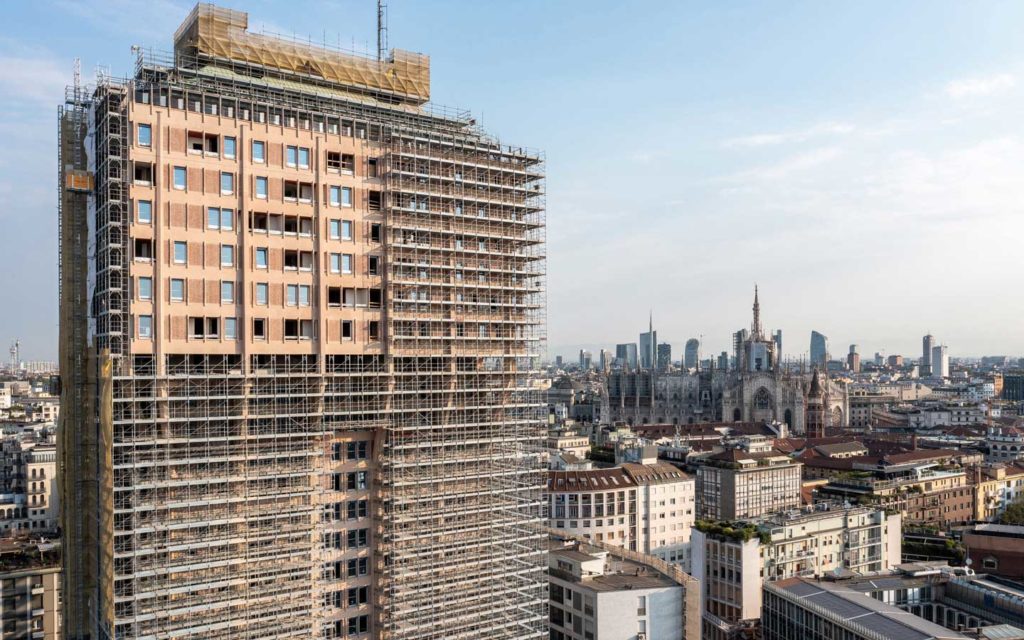
Torre Velasca, built and designed by BBPR between 1956 and 1958, became since its construction a symbol of Milan and its post-war recovery and, since then, it has become an iconic landmark in the Milanese architectural landscape.
Dismantling work has begun on the tarps and scaffolding that have covered Torre Velasca for the past 18 months to allow the delicate and complex restoration work.
Asti Architetti was in charge of the project for the renovation and renewal of the façade while respecting the building’s original design, was in collaboration with the CEAS studio for the façade renovation works – in close contact with the Milan Superintendency of Archaeology, Fine Arts and Landscape – while Hines, as development manager and investor of the HEVF Milan 1 fund managed by Prelios SGR S.p.A, co-ordinated all the actors involved and supported the work during all phases of the delicate process.
By the end of September, the scaffolding that covered all four sides of Torre Velasca will be taken down, while works will continue inside the building, always based on a project by Studio Asti, and they will be completed by 2023.
“The project is focused on the “overall image” of the tower, with the aim to identify the functions requested by the client, by paying special attention to the definition of the building, its typology, and architectural features of the internal office and residential units. These different aspects had already been studied by the BBPR and then fine-tuned in all their details, in connection with one another. Each unit is different from the other, be it offices, residences or retail units on the base floors, and this reflects the compositional variety of the façades, the design of the interiors, the layouts, the relationship between inside and outside, the fixed furnishings as well as the finishing materials and colours”, Architect Asti points out. As a matter of fact, Asti Architetti’s aim was to embrace the “spatial sensitivity” that underpinned BBPR’s original design.
Since 1958, the Torre Velasca had never undergone renovation, maintenance and redevelopment. The weathering of the last 70 years, however, had profoundly deteriorated the building’s façade, which had by then lost its original colours, characterised by iridescent shades that could vary according to the changing light at different times of day. In order to restore the building to its original colour that overlooked the Milan skyline at the end of the 1950s, the work team conducted scientific material analyses on the plaster, field studies, historical documentary research and recovered evidence to restore all the elements that build the façade The plaster identified was then studied with Mapei in order to create a specially developed binder, that was named legante Velasca, able to restore the building’s peculiar “pink-grey” colour that was expected.
The restoration work on the façades, however, was not just of an aesthetic and architectural nature, but also involved structural consolidation.
Thanks to such efficient synergies – and to the support of the architect Belgiojoso, who granted access to the original archives of the tower’s plans – Torre Velasca is now being returned to the city of Milan, preserving its original characteristics, renewing some of its functional features with a view to sustainability, safety and space liveability.
- Architectural design: Asti Architetti
- Owner and developer: Hines Italy
- Façade consolidation project: CEAS
- General plant design: ESA Engineering
Companies involved in the façade restoration work:
- General Contractor: Ars Aedificandi S.p.A. – Villa d’Adda (BG)
- Façade restoration: Gasparoli S.r.l. – Gallarate (VA)
- Supplier Legante Velasca: Mapei S.p.A. – Milano
- Scaffolding: Gruppo Di Falco S.r.l. – Opera (MI)
Photo Credits
- Photo Torre Velasca: courtesy by Hines Italy
- Photo Torre Velasca: @Giacomo Albo
- Photo Paolo Asti: @Andrea Cherchi

